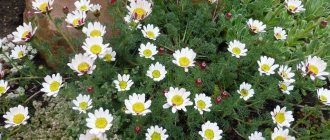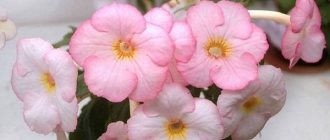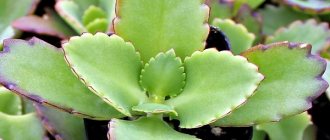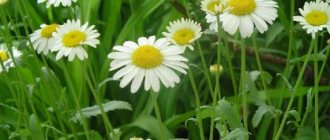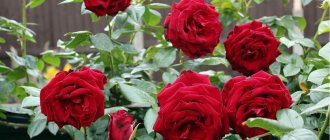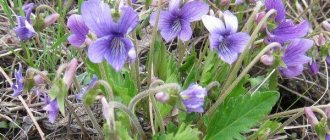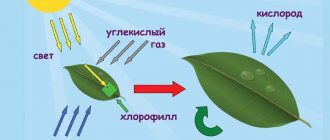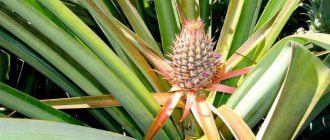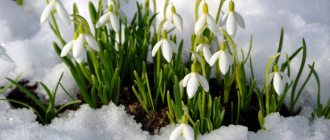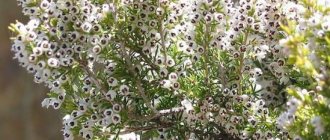Anacyclus
The plant really strongly resembles chamomile in appearance. The variety has about 10 subspecies , which are annual and perennial. The petals of the opened bud have a double color: they are white on the inside and pink on the outside. The flower reaches a diameter of 5 cm.
Basically, the varieties look like small bushes creeping along the ground. As a member of the aster family, anacyclus is subject to the solar rhythm: it opens at dawn and closes during sunset.
Arctotis
A rather tall crop, which sometimes grows up to 130 cm. In difficult conditions, the flower develops poorly and grows only up to 25 cm. The species is divided into two subspecies: stochafolium and hybrid.
Both named subspecies are characterized by unusual buds with petals colored red or bronze at the center with a gradual transition to yellow. The buds open only in sunny weather, and you won’t be able to admire them in the rain.
Venidium
These are white, pink, orange or yellow flowers similar to daisies. They have a brown or dark red core. When open, the bud reaches 10 cm in diameter , and the length of the stem is between 70-80 cm. The species is rarely grown in open ground, more often it can be found in home pots and flowerpots. Flowering begins at the end of June and continues until the end of September.
Names and photos of flowers similar to chamomile
A variety of chamomile flowers differ in color, flowering period, growing rules and care requirements. They look equally harmonious both in large flower beds and in single or mixed plantings, becoming a charming element of any landscape design.
Anacyclus
Among the names and photos of flowers similar to chamomile, the most popular is anacyclus. It is almost impossible to distinguish it from chamomile in appearance - it also has thin, elongated white petals.
Main botanical features of Anacyclus:
- creeping branches, formed in a circle and forming clumps;
- buds are white with a yellow core or bright yellow;
- the Depressum variety has deep pink flowers;
- at night and in rainy weather the inflorescences close.
There are more than 15 varieties of anacyclus that grow in Russia - both annual and perennial. Most varieties bloom from mid-May to late June.
Nivyanyk
Nivyanik are flowers that look like large daisies. They not only have extreme external similarity, but also have the second name “meadow chamomile”. In total, more than 20 varieties of nevus have been bred, which are grown both in specialized flower beds and in private garden plots.
Features of the cornflower:
- plant height, depending on the species, reaches 20-120 cm;
- nivaria grows well and blooms luxuriantly only with sufficient sunlight or artificial lighting;
- the flower can grow in one place for up to 12 years.
Among the popular varieties of nevus, you can find plants with simple or double inflorescences, large and miniature. Most of them are perennials that bloom in June-July.
Doronicum (kozulnik)
Doronicum or Kozulnik is the name of yellow flowers similar to daisies. Beautiful and unpretentious perennials of sunny yellow color are widely used in landscape design in the design of rockeries and rock gardens.
There are different varieties of Doronicum, both tall and dwarf. One of the largest is considered to be the Kolyumny Kozulnik, whose height reaches 70-85 cm. Among the miniature varieties, the most popular are Doronicum Kluza and Altai, which have a height of no more than 10-20 cm.
Doronicum has medium-sized inflorescences, up to 4-6 cm in diameter. Depending on the variety, Doronicum blooms from early May to June or from the second half of July to the end of August. The plant has good winter hardiness.
Helichrysum daisy flower
Helichrysum daisy flower, which is also known as immortelle, is a frequent “guest” in Russian gardens. This plant is not an exact copy of chamomile, but has an external similarity.
Helichrysum daisy-flowering is a perennial low-growing plant that forms a clump up to 40-60 cm and up to 7-10 cm in height. Immortelle can be recognized by the bluish tint of the leaves, short, low peduncles and lush snow-white inflorescences reminiscent of chamomile.
Immortelle is characterized by a very fast growth rate - at the same time, the plant has virtually no care requirements. Helichrysum blooms all summer, from the first days of June to the end of August.
Chamomile-like calendula
Calendula is a flower similar to chamomile, but not a chamomile. This is a bright “representative” of the Astrov group, popular among many gardeners. This is a visually attractive and unpretentious plant, which is grown both for decorating a personal plot and for use for medicinal purposes.
A variety of tall varieties, as well as dwarf ones, are used in gardening. The first include :
- Yuvel – 45-55 cm;
- Canarienvogel - 58-60 cm;
- Goldkugel – 63-65 cm.
The most common and popular low-growing varieties of calendula include Patio. The height of such a plant does not exceed 20-25 cm.
Calendula reproduces by self-sowing and is easy to grow and easy to care for.
This bright plant is planted not only in the garden, but also along garden beds, as its aroma repels many insect pests.
Snow White Pyrethrum
Pyrethrum is a snow-white flower that is almost a copy of chamomile. Most varieties of pyrethrum have large, round inflorescences with a yellow center and thin, long white petals.
As a result of breeding work, more than 10 varieties of pyrethrum, perennial and annual, were bred. They are not only snow-white, but also bright in color - burgundy-raspberry (Bressineham Red), pink (Brenda), coral-scarlet (James Kelway).
Daisy
Among the names and photos of flowers similar to chamomile, one often finds the daisy, which is considered its “close relative” for its extreme external similarity.
This plant is distinguished by a huge variety of colors - it can be not only snow-white, reminiscent of a chamomile, but also coral, bright pink, and lilac.
Arctotis
Arctotis are flowers that look like small daisies. This plant has a round inflorescence with elongated petals in white, pink, yellow, violet, orange or purple.
Main features of arctotis:
- depending on the variety, arctotis has a height of up to 15-25 cm;
- the only tall plant species is steacholist, growing up to 80-100 cm;
- Arctotis grows best in well-lit areas with rocky soil.
Arctotis blooms from mid-July to the end of September. The plant has gained popularity among gardeners due to not only its high decorative value, but also its excellent resistance to drought and frost.
Gatsania
Many gardeners are interested in the name of colored chamomile, because this bright and unusual plant can become a magnificent decoration for any garden. Most often we are talking about African gazania, which looks like a chamomile, but has bright and rich colors.
Main features of Gatsania:
- in Russian latitudes, the African plant is most often grown as an annual;
- in containers and flowerpots gatsaniya can be grown as a perennial;
- the height of most gatsaniya varieties does not exceed 30-40 cm;
- the plant has good drought resistance and can easily tolerate frosts down to -8°C;
- Gatsania reproduces by seed and vegetative methods (cuttings).
Gatsaniya has a huge number of color variations. This ornamental plant can have petals of white, purple, pink, lemon-orange. The flower is distinguished by striped petals or a ring of contrasting color at the base.
Depending on the variety, not only the color differs, but also the size of the inflorescences, which can reach 5-10 cm. Gatsania is characterized by long-term flowering - with minimal care, the plant pleases with bright inflorescences all summer until September.
Several varieties (long shoot and hybrid) bloom in July and bloom until late September or mid-October.
Gerbera
Gerberas are colorful flowers that look like daisies. Breeders have bred more than 75 different varieties of gerbera, the height of which can reach 20-65 cm. The plant amazes with a huge variety of colors - gerbera can have inflorescences of burgundy, pink, lilac, scarlet, yellow-orange or snow-white.
Gerberas are quite demanding in terms of growing conditions; they need dryness, warmth and good lighting. Therefore, most often colorful flowers are grown in pots and flowerpots on balconies, patios and greenhouses.
Coreopsis
Coreopsis is a brightly colored daisy-like plant. Depending on the variety, it may have purple, pink, lemon yellow or orange petals. Coreopsis can be either tall (large-flowered variety - up to 90-110 cm) or dwarf (ear-shaped variety has a height of no more than 23-30 cm).
Distinctive features of coreopsis:
- bushes are lush and spreading;
- inflorescences are small, up to 3-4 cm in diameter;
- perennial can grow in one place for up to 5-7 years.
To grow coreopsis, it is advisable to choose warm, well-lit areas with good drainage, since excess moisture causes its root system to die. With proper care, bright coreopsis produces lush blooms from mid-July to the end of September.
Osteospermum
Osteospermum is a beautiful ornamental plant, also called Cape daisy. It is loved by many gardeners for its lush and long flowering, which lasts until the onset of the first frost. The Cape daisy comes in many colors - white, purple, lilac, lilac, pink, yellow and orange.
A special feature of osteospermum is that its lush buds open under the influence of low air temperature. The plant tolerates sudden weather changes well and does not lose its decorative appeal during autumn frosts and rains.
Flowers that look like daisies can become a bright and original decoration for any flower bed, flower bed or garden. Snow-white or bright inflorescences will harmoniously fit into the landscape design of a personal plot, adding sophistication and modest charm to it.
Gatsania
The flower has an incredible variety of shades: yellow, lilac, red, orange, etc. There are also two-color and striped varieties. Externally, gatsaniya really resembles a chamomile, only with brighter and more colorful petals. Gradient varieties, where one color gradually gives way to another, do not allow you to take your eyes off the bush.
Under natural conditions, there are about 40 species that are resistant to frost, direct sunlight, drought and high temperatures. Flowering starts at the beginning of summer and continues until night frosts. The height of the bush is within 30-40 cm. The flower retains its appearance for a long time after cutting.
Gatsania is grown in open ground, pots and flowerpots. It combines well with other plants in the flowerbed and looks impressive when planted alone. The species is used to decorate paths, borders and rock gardens.
Diseases and pests of pericallis
The greatest danger to pericallises is aphids. In a warm environment, it can destroy a plant in a matter of weeks, and the fight against the pest should begin as early as possible and immediately - with insecticides. Infected pericallis must be isolated from other plants.
If the soil is waterlogged and temperatures below 8-10 degrees, pericallises may suffer from powdery mildew, gray rot, wilts and other fungal diseases.
Common problems in growing pericallis:
- limp leaves when the light is too intense when exposed to direct sunlight;
- yellowing and wilting of leaves due to insufficient watering or drafts;
- blanching of leaves in a sunny place;
- slight wilting of bushes, drooping of leaves due to irregular watering and
- unstable humidity;
- complete withering of the bushes due to stagnant dampness or complete drought;
- loss of the characteristic color of flowers or its intensity due to lack of lighting;
- rapid flowering in too high temperatures.
Hybrid pericallis (Pericallis hybrida), or garden groundsel, or bloody Cineraria. © senetti
Gerbera
The plant is similar in structure to a chamomile, but has purple, yellow, cherry, orange, cream and classic white petals. Such diversity attracts gardeners; resistance to adverse conditions, as well as wide possibilities for use in bouquets, also play an important role.
There are double gerberas, and their numerous petals are tubular, curly and pointed. The species is grown outdoors and at home. Flowering starts in the summer months and lasts until November. The exact dimensions of the bush and the open bud depend on the variety.
Asters
Despite the wide popularity of their appearance, many varieties of asters resemble daisies. For example, the photo below shows the bush aster Symphyotrichum dumosum:
This is a weed with small inflorescences, growing, like plants of the genus Matricaria, along roadsides, in vacant lots, and on dumps. Her middle flowers are yellow, and the marginal ones are white, but elongated and quite narrow. It is often called “chamomile with narrow petals.”
Interestingly, despite the small size of the bush, it is a perennial herb.
Other asters may be larger than daisies and may differ from them in the colors of their inflorescences. For example, blue asters are known:
Some varieties have such a rich color that their flowers are blue:
But still, most asters, especially decorative ones, clearly differ from daisies in the large number of marginal flowers, creating the impression of “pubescence”:
Doronicum
The second name of the species is Kozulnik. There are about 40 varieties, but often only 10 are used. The height of the bush varies in different varieties from 0.5 to 1 meter. The flowers are yellow and quite large - the diameter reaches 10 cm. Flowering begins in May and lasts on average 1.5 months. At the same time, the plant can be pleased with the repeated release of buds in mid-summer or early autumn.
When cut, the flower retains its attractive appearance for a long time. You should know that the plant is poisonous. It is not recommended to plant Doronicum under trees - it will be suppressed.
Calendula (marigold)
The following daisy-like flowers are incredibly popular among people who have a local area. They belong to the Astrov family and are distinguished by their unpretentiousness to external conditions. Depending on the variety, the bush grows from 20 to 65 cm in height .
The open buds are quite compact, the petals are deep orange. Having planted marigolds in the garden once, you will not need to buy seeds for the next year - the plant actively reproduces by self-seeding, and if its spread is not limited, it will quickly occupy the entire free territory.
Coreopsis
The flower has yellow petals with a jagged edge and brown spots at the base. Pedicels grow up to 60-100 cm in height, depending on the variety. The diameter of the opened bud is within 3-7 cm. Flowering begins in mid-summer and lasts 2-2.5 months. Flower baskets can be regular or double, and the shade of the petals also varies.
The crop is suitable for growing in large front gardens and massive flower beds.
Cosmea
The plant often evokes associations of summer warmth and comfort. Its distinctive feature is its low maintenance and self-seeding. Once you remember what these colorful daisies are called and look like, they can be distinguished in private flower beds, as tapeworms on lawns, in city park areas and along borders. A lush carpet of greenery and bright buds will decorate the garden, covering bare areas of the territory and emphasizing straight lines.
The crop easily copes with prolonged drought and heat, is undemanding to the presence of various substances in the soil, and is resistant to frost. The petals come in many shades of red and purple, and white varieties are also found. The buds are located on straight stems growing within 0.7-1.5 meters. Cosmea is used as a tapeworm and in the company of other plants. If there are empty spaces in the flowerbed, this flower often saves the day, since it manages to easily and quickly cover all the flaws.
Reproduction of pericallises
Pericallis, like most annuals, is obtained from seeds. The flowering of the plant begins 8-9 months after sowing, so for January flowering, seeds are sown in April, and for March or later flowering, in the summer. The seeds are scattered superficially on a leveled, moistened substrate, without being covered with soil.
Pericallises are germinated under glass or film at a temperature of about 18 degrees Celsius. Heat has a negative effect on seedlings. Seed germination usually takes 10-12 days; picking should be done after the cotyledon leaves have fully developed into boxes or large containers. As they grow, after 1-2 months, they are transplanted into individual containers.
Nivyanyk
In fact, this is chamomile, namely its garden variety. Nilet belongs to the aster family and is often grown in our gardens. It is chosen due to the lack of special requirements for care, soil, and watering. It tolerates frost well. The bush grows up to 120 cm, the exact figures depend on the variety.
Flowering is accompanied by the opening of a white bud up to 10 cm in diameter with a yellow center. The process is repeated twice during the summer season: in May or June, and a second time in August or September.
Watering and moistening the plant
Indoor gerbera loves moderate irrigation, which prevents the soil from drying out. For irrigation, settled water at room temperature is used. Water is poured along the edges of the pot, avoiding getting into the root rosette. It is permissible to pour liquid into the pan, provided that the remaining water is subsequently drained (at least after 40 minutes). Stagnation of irrigation water in trays is extremely undesirable, as it can lead to fungal infection. It is dangerous to use cold water for watering gerberas; it causes stress in the root tissues and provokes the development of diseases.
Dry air, typical of city apartments, can negatively affect plant growth, especially during the heating season. Features of growing indoor gerbera include daily spraying with a spray bottle, which ensures watering of the leaves and stem with the finest water dust. When spraying, avoid the appearance of large droplets in the outlet.
Osteospermum
These flowers are exactly like daisies, only with purple or red petals. The varieties with white flowers are especially similar. It is recommended to plant in open areas exposed to direct sunlight. At the same time, osteospermum shows high resistance to life in regions where cloudy and rainy weather prevails.
The crop is grown in the form of annual or perennial plantings. The height of the bush varies between 25-100 cm, the opened bud reaches a diameter of 4-10 cm.
Prevention of diseases of indoor plants
Indoor gerbera
Preventive measures consist of increasing resistance to negative influences. To strengthen the ability of home gerberas to resist pathogenic organisms, you should adhere to several basic rules:
- control of acidity and availability of nutrients in the soil;
- compliance with the temperature regime, which, if violated, can lead to curling and dying of leaves;
- proper lighting;
- regular watering and proper irrigation, which prevents the formation of excess moisture and the development of pathogenic microflora.
A gerbera that does not receive the necessary nutrients in the proper amount becomes weak and susceptible to negative environmental factors. Lack of lighting and the absence of necessary microelements in the soil inhibit the growth of the plant, leading to the death of its parts, which become food for various parasites. If you follow simple care rules, indoor gerberas are completely worth the time spent. Magnificent flowers with delicate bright petals can create a festive mood and are suitable for decorating any home or apartment.
Pyrethrum
Another double of the chamomile, which is a highly branching bush, 20-50 cm high. The opening buds can reach 8 cm in diameter, their petals are colored white, pink, crimson, red and lavender. The flower is grown as an annual and perennial crop and has an effective ability to self-sow. Planting is possible in almost any soil, but waterlogging and stagnation of water should be avoided.
Flowering begins in May and continues for a long period. The aroma is strong and quite specific.
Rudbeckia
The flower belongs to the tall category, the minimum height of the bush is 50 cm, and the maximum reaches 2 meters. The plant has no special care requirements; moreover, it is perennial and can decorate the garden in one place for up to 5 years.
The daisy-like flowers come in yellow, pink, scarlet, orange and cream. There are two-color species, where the darker base becomes lighter as it approaches the edge of the petal. There are 40 varieties in total.
Ursinia
The shape of the flower is similar to a chamomile, but the color of the petals is very different. They are mostly golden with a hint of orange. The color is bright and rich, easily attracting attention. It is noteworthy that the inside of the flower is lighter than the outside. For example, a petal that is yellow on the inside will be brownish-purple on the back. The opened buds have a diameter of 5-6 cm.
The shoots grow up to 30-60 cm, covered with dark green foliage. The crop is grown both annual and perennial. It is resistant to negative temperatures and is undemanding to living conditions. Flowering continues until night frosts appear.
Chrysanthemums, including Bacardi chrysanthemum
The inflorescences of plants of this genus have a shape similar to that of a chamomile, but differ primarily in their size, long stems and a variety of color combinations.
For example, this is what a chamomile chrysanthemum looks like:
Such chrysanthemums are most often sold in flower shops as part of bouquets.
It is this that men call “chamomile” when buying flowers in flower shops, although the size of its inflorescences is at least 2 times larger than the size of chamomile inflorescences.
Due to the fact that the stems and peduncles of chrysanthemums are quite tall, they are sold as gift flowers - they look good in a bouquet arrangement, usually as a background.
Against the background of these chrysanthemums, large flowers seem especially elegant.
The Bacardi chrysanthemum is most often used to make bouquets:
Chrysanthemum Bacardi
In some varieties, the middle of the inflorescence is richly yellow, in contrast to typical flowers with a yellow-green or simply green middle.
On a note
Chrysanthemums are mainly autumn-blooming plants. Together with rudbeckias (also similar to daisies), they are usually the center of autumn flower beds.
Chrysanthemum
A perennial or annual plant with many varieties. Flowers are located on a separate stem or are included in massive inflorescences. The petals are cream, lilac, yellow, purple and lilac. The height of one branch varies depending on the variety, in rare cases it can grow up to 160 cm. The plant is stable after cutting.
The chrysanthemum variety Bacardi deserves special attention. You should remember the name and look at the photo, because chamomile-like flowers can be used to create a wide variety of compositions. The variety has white, densely set petals and a yellow center, which together gives an incredible similarity. There are up to two dozen buds on one large stem, so literally 3-5 branches allow you to form a lush, beautiful bouquet.
In addition to the standard color, the petals can be red, yellow, pink, or cream. This flower is popular among florists - its inflorescences are painted in various shades, sprinkled with sparkles, and decorated with ribbons.
The Bacardi variety is grown outdoors and at home. It is placed on sunny lawns and provides abundant watering.
Osteospermum or Cape daisy (Cape chamomile)
Osteospermum is a herbaceous plant with large flowers. During the flowering period, site owners are pleased with the huge number of pink and lilac flowers. The ornamental crop can be grown both in open ground and at home.
It is important to plant seedlings by hand very carefully so as not to damage the root system. In the spring and summer months, experts recommend adding organic matter or mineral fertilizers to the soil.
Interesting! If you wish, you can plant flower seeds in open ground at the end of April, so that the area will soon be decorated with beautifully flowering bushes, the foliage of which emits a pleasant aroma with notes of astringency.
Echinacea
A perennial with properties beneficial to the human body. There are only 10 types of Echinacea, the most popular of which is purple. Its petals can be not only purple, but also red, cream and yellow. The daisy-like flowers consist of slightly downturned petals and a convex center.
The height of the stem in some cases reaches 140 cm. Reproduction occurs by seed and vegetative methods. Flowering begins in mid-summer and continues until September. The plant produces buds from the second year of life.
It is recommended to plant in sunny areas; shade and even partial shade are unacceptable. There are no special requirements for the soil; only light sandy soil will not work. Echinacea grows in one place for about 5 years, then a transplant will be required.
Planting a plant
Gerbera/Gerbera indoor
Slightly acidic soil is best suited for growing home gerberas. Leaf soil, formed when fallen leaves rot, has a good structure and a sufficient amount of necessary acids. Such soil is not as nutritious as humus, but it is easier for thin and delicate roots to take the necessary nutrients from it. Air-permeable lumps of leaf soil have good hygroscopicity.
The pot in which you plan to grow the gerbera must also be breathable, so it is advisable to use clay products.
Gerbera propagation occurs by seeds or vegetatively, through dividing the bush and cuttings. It is better to plant seeds in spring in leafy soil with a small sand content. Planting depth is about 5 mm. Transplantation into separate pots occurs when 3-4 true leaves are formed. Under favorable conditions, about 11 months pass from sowing to flowering of home gerbera.
Video “Sowing gerbera seeds”
